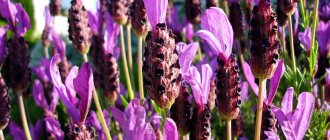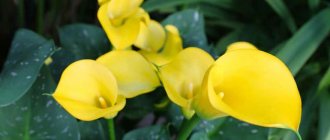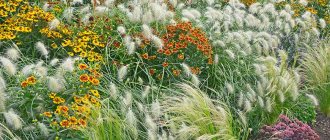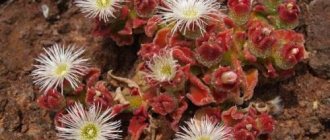Clematis is one of the most beautiful climbing plants. It owes its undeniable charm to its beautiful shape and interesting appearance of delicate flowers. These plants have gorgeous hues and a delightful profusion of flowers. With proper care, timely pruning, properly prepared position and supports, we can get a magnificent, profusely flowering vine that will decorate the yard for ten years. We will tell you how to grow clematis - planting and care in open ground, how to prune it correctly.
A few words about the plant
Clematis is a unique plant that is perfect for growing in our climate. Other names for vines are clematis, princes. The Clematis species includes many varieties. These are perennials that amaze with the charm and extraordinary delicacy of their magnificent flowers. Most often the plant can be found in gardens, but it grows well in nature.
Clematis often have large, beautifully colored flowers. Sometimes the diameter of the flower reaches 20-25 cm, the petals can be simple or double. The color range is very wide: in our climatic conditions, white, pink, purple, and red flowers are more common.
When can you plant clematis?
Clematis can be grown from seeds. Depending on the size of the seeds, there are 3 groups, each of which has its own planting time:
- Small seeds (grape-leaved, Tangut) have a germination period of 2 to 16 weeks. Planting seeds for seedlings of such clematis is done in April, sometimes in March.
- Medium-sized seeds (Douglas, Manchurian, whole-leaved) germinate in 1.5-6 months. They are sown at the beginning of the year, in January.
- Large seeds (Jacmans, purple) germinate from 1.5 to 8 months, sometimes longer. They are planted in the fall, immediately after harvest.
Seedlings are transplanted into open ground in the spring; in warm regions this can be done in the fall.
Popular types and varieties
Clematis includes more than 300 valuable noble varieties, which differ in color and shape of flowers. New varieties continue to be developed to increase plant resistance to frost, adapt them to growing in containers, or try to create varieties that can replace ornamental shrubs.
Depending on the variety, you can grow species with large or small flowers, which grow well in the southern and northern parts of the garden. Varieties differ in appearance, vigor, flowering period and frost resistance. When growing clematis, it is worth considering that large-flowered varieties are much more sensitive and demanding than perennial and botanical varieties.
Large-flowered
The most popular in our gardens are large-flowered clematis. Their flowers are the most attractive - large, reaching 15 cm in diameter. They are magnificent and last a long time on the plant. Multi-flowered clematis often bloom twice and can decorate the garden all season long:
- flowers appear for the first time in May–June;
- then they repeat flowering on the shoots of the current year until autumn.
Among the easiest to grow large-flowered clematis are the following varieties:
- "Comtesse de Bouchau";
- "Gipsy Queen"
- "Hagley Hybrid";
- "Huldine";
- "Jackmanii";
- "Ramona"
- "The President".
Clematis varieties are described in more detail in the following article -
Grape leaf
Noteworthy is the climbing clematis or clematis (Clematis vitalba), characterized by strong growth. The shoots reach a length of 10 meters in a short time. It is often planted in containers on the balcony. This is one of the most attractive climbing plants available for cultivation in our climate. The liana forms small flowers that densely cover the plant. There are really a lot of flowers, usually they are white.
Nowadays varieties with increased frost resistance are being developed, because previously these perennials often froze in severe winters. The most valuable variety of clematis with high frost resistance and magnificent, delightful lush flowers - “Summer Snow” Summer Snow has white, relatively large flowers.
Tangut
Interesting is the Tangut clematis (Clematis tangutica), characterized by drooping single yellow flowers appearing on thin stems. Tangut clematis has the advantage that its fruits are very decorative - fluffy and silky.
Notable varieties are “Anita” and “Bill McKenzie”, growing up to 6 meters in length. Tangut clematis is also available in varieties with intense orange flowers.
Alpine
Alpine clematis is excellent for growing in our gardens. These garden flowers are especially valued for their resistance to adverse weather conditions. They are great for any garden; you can even plant them in areas where cold winds often blow. Alpine clematis is suitable for cooler regions of the country, so it is very popular. The species is distinguished by bell-shaped flowers hanging from long peduncles, taking on beautiful, intense colors.
Alpine clematis has colorful varieties that are great for growing. It is even more frost-resistant than grape-leaved and grows well anywhere. Intense red or burgundy varieties are popular. Violet and blue shades are interesting - these are relatively rare flower colors, so it is worth making such a contrasting accent in the garden. The most popular varieties of alpine clematis include:
- "Blue Bird" Blue Bird;
- "Cecile" Cecile;
- "Frankie" Frankie.
Straight
In gardens you can find straight clematis, which also grows in wild form in our country. This is a small-flowered clematis with a stunning scent. The flowers are quite small, but numerous, so they do not lose their attractiveness. They look great in the garden; ornamental shrubs are good company for them.
Manchurian
Manchurian clematis (Clematis mandschurica) is unpretentious in care. This is an extremely undemanding plant that blooms beautifully almost all season. This is a vine reaching a height of 2 meters. The distinctive features of the species are small white flowers, reaching a maximum diameter of 2 cm. Their shape resembles scattered stars. Flowering period: July-September. An additional advantage of the plant is its wonderful aroma. White flowers look interesting against the background of green leaves. After the flowering period, characteristic fruits appear in place of the flowers, consisting of tiny hairs that form small “doughnuts”.
Removing the protective cover
Preparing the herbaceous perennial for the new season begins with removing the winter protective covering. You need to approach this with caution. The main conditions are the absence of night frosts and suitable temperature conditions.
In regions with mild climates, clematis only require hilling with leaves or peat. Removing them after winter is easy. When the daytime air temperature remains stable at no lower than 7-8°C, the shelter is lightly raked to allow the ground to warm up. With the cessation of night frosts, the protection is completely removed.
If the vine was covered more thoroughly, you need to remove the cover earlier and do it in stages. Begin the procedure at above-zero temperatures during the day and stable below-zero temperatures (within 1-2°C) at night:
- the top layer is removed;
- the covering material is opened slightly for air circulation;
- With persistent warming, the protection is removed completely.
Then all clematis are inspected and damaged shoots are removed.
To prevent fungal diseases, the soil around the plants must be treated with copper sulfate or a 1% solution of Bordeaux mixture.
Landing
Choosing the soil, position
Multi-flowered clematis, often found in our gardens, have fairly low soil requirements. Requirements for the planting site and soil may vary greatly for other species. The straight and alpine clematis have small requirements for soils; a little more attention needs to be paid to the grape-leaved species.
In general, clematis needs soil:
- fertile;
- humus;
- slightly damp but not swampy;
- it is desirable that it has a neutral or slightly alkaline reaction (pH from 6 to 7).
Clematis, regardless of the type, should grow in such a place that its lower part is shaded and protected, and the upper part is illuminated. Some varieties respond better to shade, others less well, but this is the general trend. The more flowers a variety produces, the greater its demand for sunshine.
The best places in the garden for clematis are in eastern or western exposures, although some varieties grow well in northern exposures. These perennials tolerate shade better than too much sunlight. Intensely colored species grow well on the southern side, and with flowers of a softer shade on the northern side.
The climbing shoots of clematis require appropriate support. It can be:
- a net thrown on the wall;
- railings and balustrades;
- stairs on the balcony;
- Since clematis tolerates shade well, it can be planted under trees, with their trunks or ornamental shrubs as support. This combination is an amazing sight.
When and how to plant?
Clematis prefers fertile, light soil rich in minerals. This can be ensured by properly fertilizing the soil before planting the plants in the garden. Therefore, before planting, it is worth adding an appropriate fertilizer to the substrate, optimally a multi-component one, which will also protect the plants from diseases. Natural compost can be used to fertilize and improve the soil structure.
Clematis seedlings are sold in containers and theoretically can be planted in the ground from spring to autumn. Clematis are often planted in the spring.
Experience shows that the best time to plant clematis in open ground is the end of summer (August, September), when the ground has a temperature of 14-22 °C. Seedlings are planted in a hole with a diameter 2 times larger than the diameter of the root ball.
Success in growing clematis is largely determined by the soil. The soil should be fertile, permeable, with a high content of humus. If the soil is heavy, for example loamy, you need to make drainage - you need to dig a hole 80 cm deep and 60 cm in diameter. A 20 cm layer of coarse gravel or crushed stone is placed at the bottom, and a 20 cm layer of well-rotted compost is placed on top of it. When planting clematis, such natural fertilizer will give it strength to grow and a supply of nutrients for several years.
After placing the plants in the hole, cover them with garden soil mixed half and half with compost. The seedlings are placed in a hole a few centimeters deeper than they grew in the pot. The sprinkled shoots will send out roots, which will strengthen the plant.
For growing on balconies and terraces, we can recommend dwarf varieties of clematis with a long flowering period.
We plant container clematis in the spring. The container must have a capacity of at least 20 liters. For growing, use high-quality soil for flowers. Pots must be equipped with a drainage hole and support for shoots. Most clematis can overwinter in pots without shelter.
An important aspect when growing clematis is the level of soil moisture. The plant prefers not too moist soils. Therefore, it needs to be planted in a well-drained place. Clematis exhibit a fairly high sensitivity to drought, but drying out the soil too quickly is also not the best option.
Comments • 765
Please show me the white one, Queen Yadaiga
Hello! I have a question, how do I know if the soil is acidic or alkaline?
Very interesting video, it’s clear that you are a big fan of flowers and a very nice person
How do you manage such beauty?











